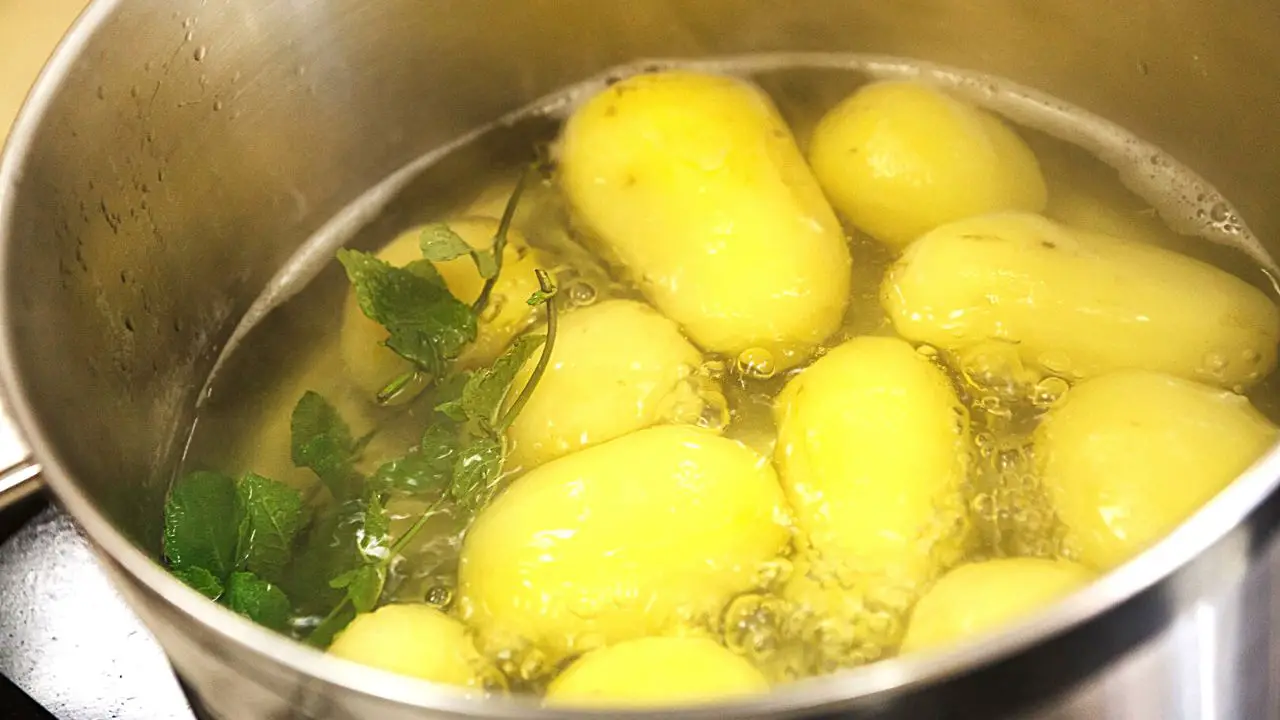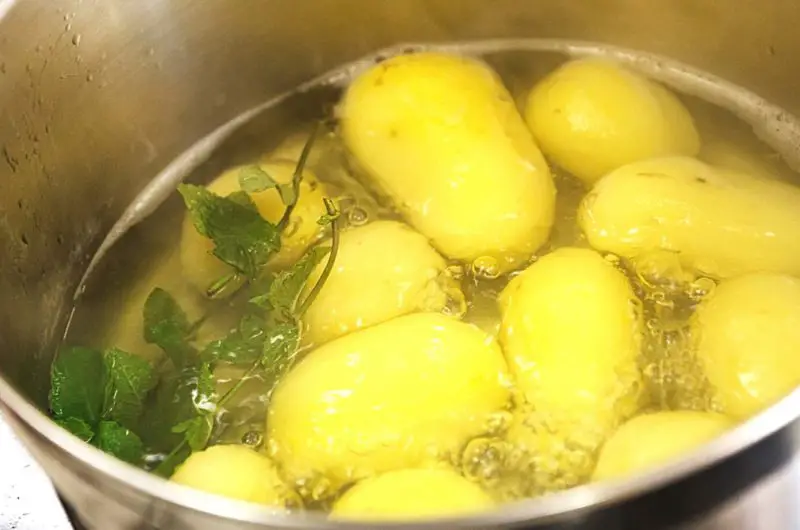The secret to boiling potatoes without them falling apart and turning mushy is mostly about timing. But even with perfect timing, you sometimes just can’t get them to hold their shape.
But don’t worry; here are some simple tips and tricks on selecting, prepping, and boiling potatoes so they won’t fall apart, keep their shape, and have a perfect texture every time.
1. Choose The Right Variety
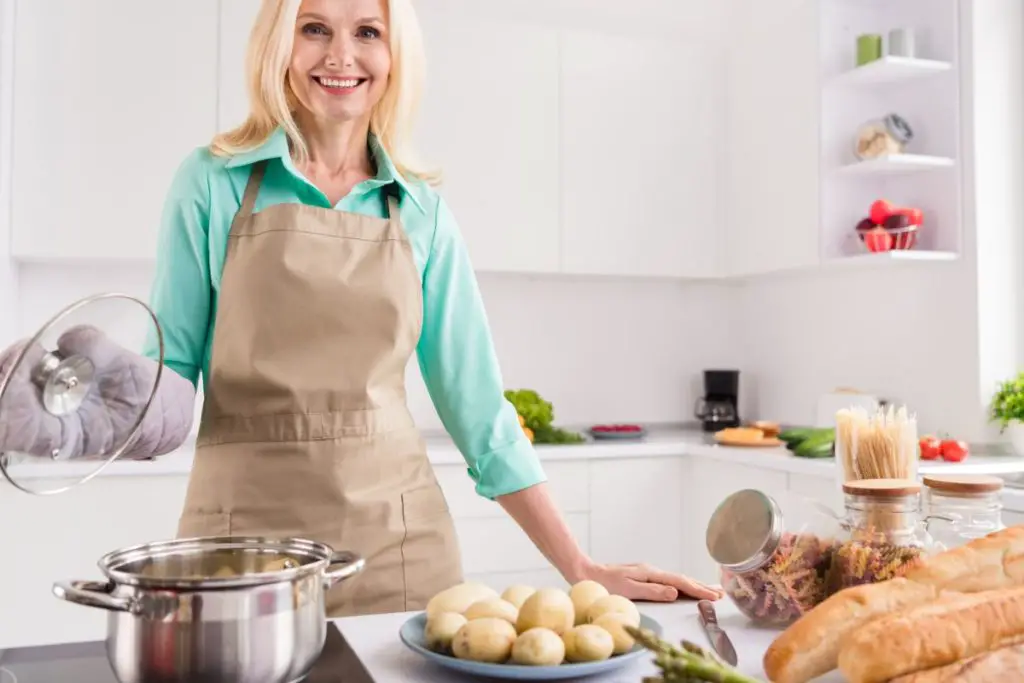
Why do my potatoes fall apart when boiled? It is most likely that you are using the wrong variety. Waxy potatoes hold their shape much better than starchy ones. The age of the potato is also a factor—younger potatoes are more likely to hold their shape when boiled than older potatoes.
The best waxy potatoes for boiling that hold their shape are those with thinner skin like Yukon Gold, Fingerling potato, new and bay potatoes, Charlotte, Maris Peer, and Red skin potatoes.
Related Post: 2 Ways To Store Boiled Potatoes (Simple Instruction).
2. Never Reach A Full Boil
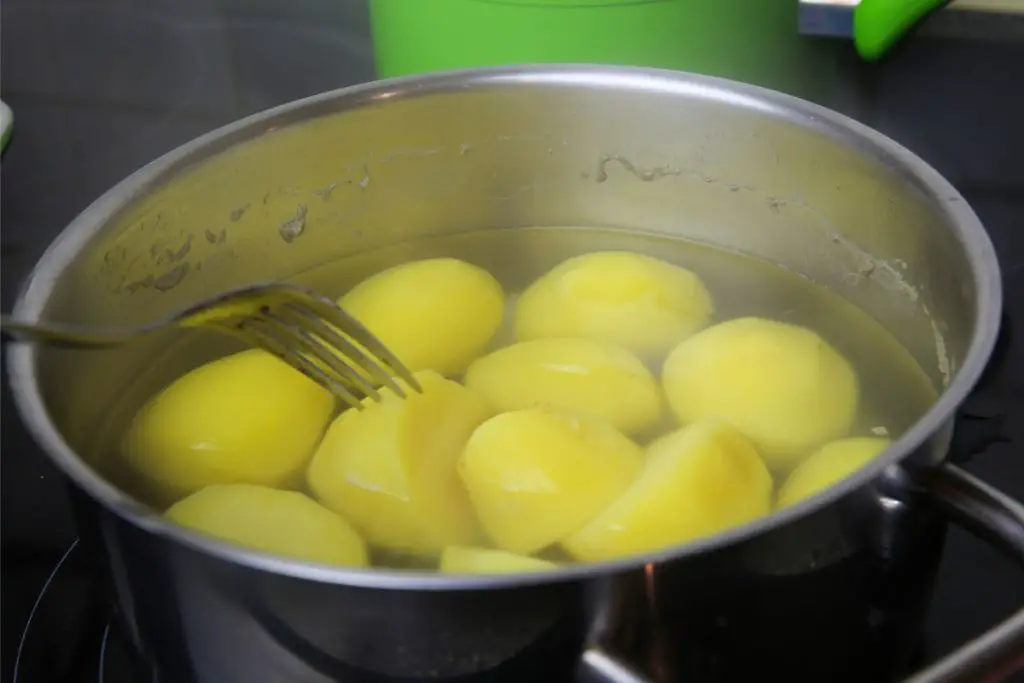
Cooking potatoes at a full boil often ends with overcooked spuds outside and a raw interior. And when you keep boiling to also reach the center, the exterior of the potato starts already falling apart.
The solution is to cook your potatoes at a gentle simmer and keep it from reaching a full boil. However, you can bring the potatoes to a boil first on high heat and then quickly reduce the heat to create a slow simmer.
3. Cook Your Potatoes From Cold
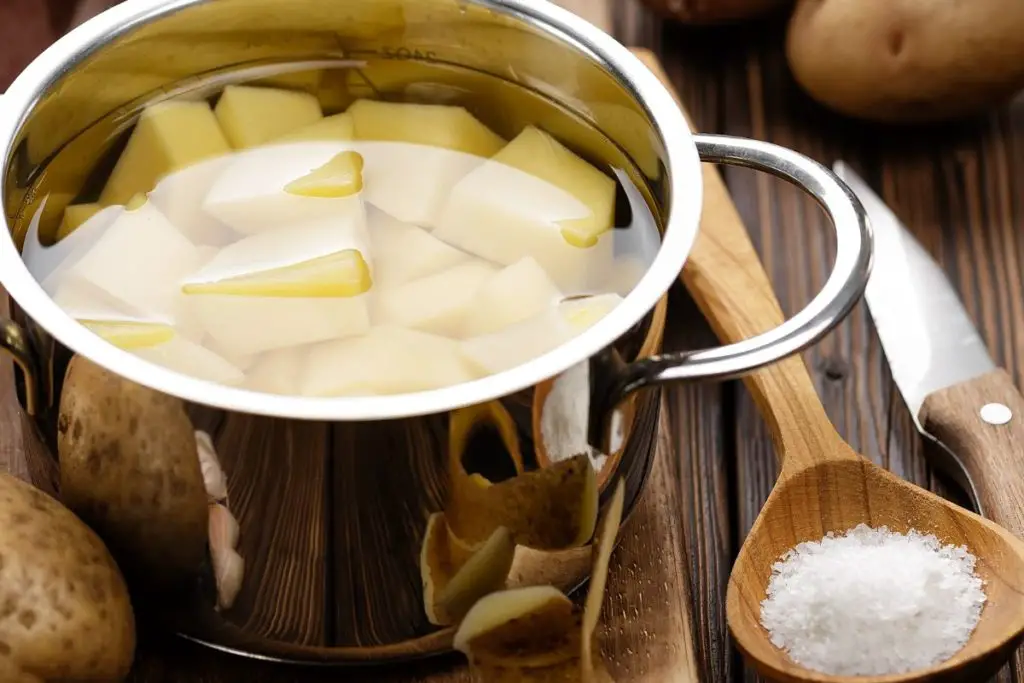
If you drop the raw potatoes into boiling water, the outside will cook much faster than the inside. Like with the previous mistake, you will have two different textures to worry about—the falling-apart exterior and the yet-to-be-cooked raw interior.
Starting with cold water gives you a more gradual and even result, and the exterior and interior do not have a significant difference between them, keeping the exterior from falling apart.
4. Keep In Mind That Cooking Times Can Vary
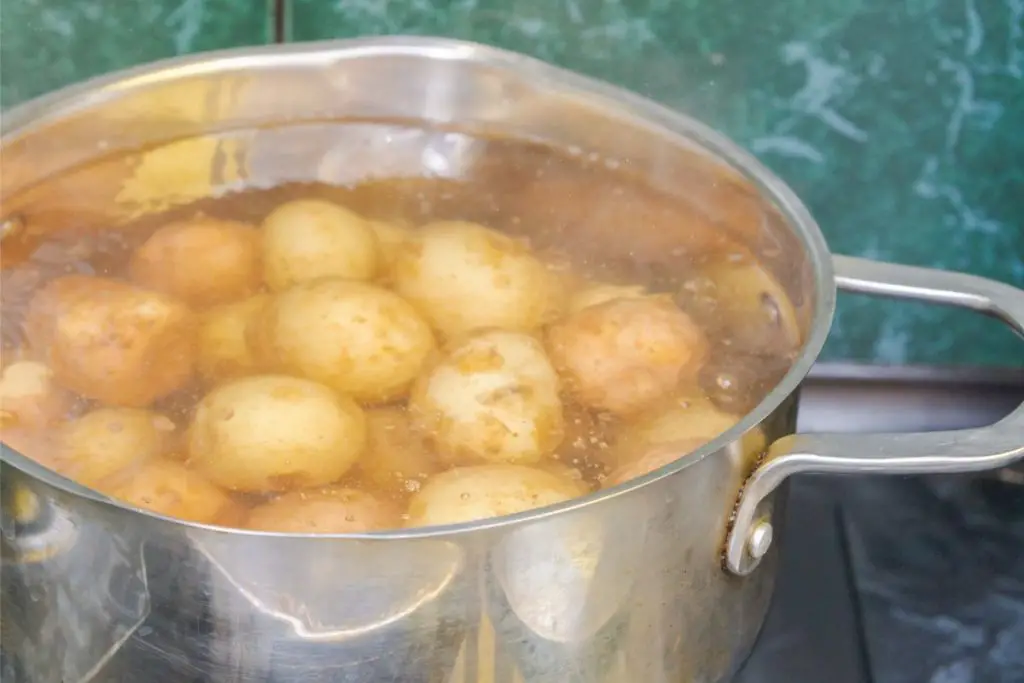
There is not a single universal cooking time rule you can follow to keep your potatoes from falling apart. Many factors may affect how long you have to cook your spuds.
One aspect to consider is the potato variety. For example, Yukon Gold potatoes have a thinner skin and usually cook within 15 to 20 minutes, while whole Russet potatoes take up to half an hour.
Potato size also matters, with large whole potatoes possibly taking up to 10 minutes more to boil. On the other hand, peeled and cubed potatoes boil much faster, within 10 to 12 minutes.
So, when cooking new varieties, keep a close eye on them so that you won’t over or undercook them and make a note of the cooking time for the next time.
5. Don’t Leave Potatoes Unattended For Long
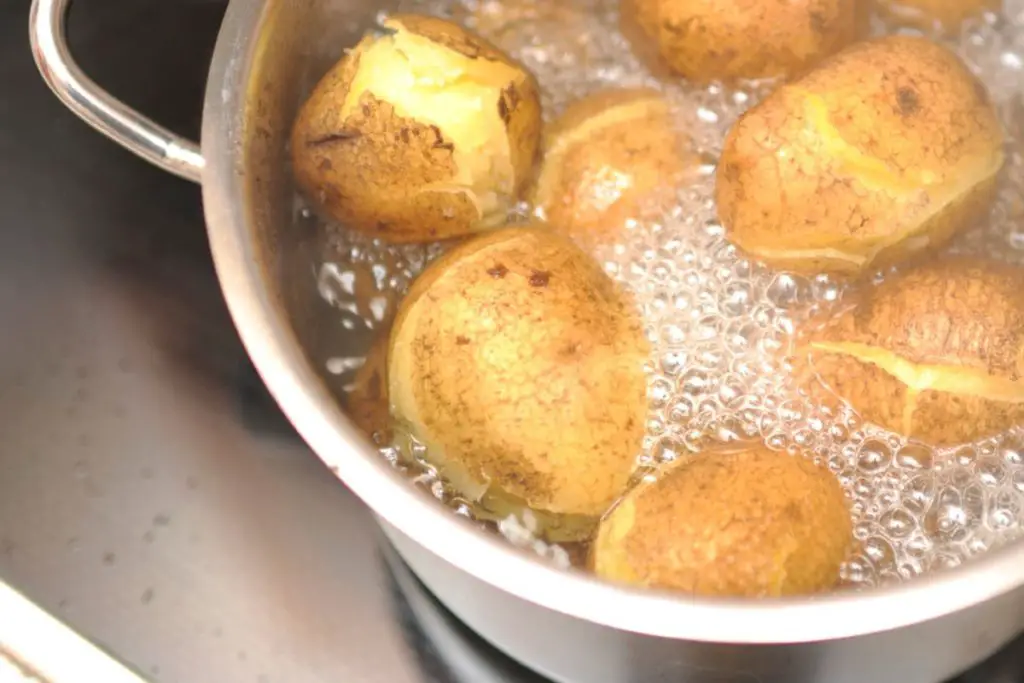
Although you can guide yourself with the previous estimations, boiling spuds are not a set-and-forget cooking method. Although you don’t need to stand next to your stove for the whole time, you still need to keep track of the process to guarantee they don’t fall apart.
If you are after perfect boiled spuds, you cannot overcook them as they will absorb too much water and fall to pieces quite quickly. So it’s essential to monitor them regularly.
Once it looks like the potatoes may be nearly done, pierce them with a fork or knife. If the cutlery slides in and out easily, the potatoes are tender and perfectly cooked. Take them out immediately and drain them to prevent further water absorption.
6. Use Steamer Basket Or Rack Instead

One of the best ways to keep your spuds hold their shape is to steam them instead of boiling them.
Steaming is a more gentle cooking method and produces a virtually identical taste to boiling but gives you a better texture. Keeping potatoes away from the water and rolling boil prevents excess moisture absorption, which keeps them from falling apart. Although it is still possible to overcook them, making them completely fall apart is generally much harder.
But that’s not the only benefit—it also helps to retain the nutrients and prevents them from diluting in the water.
All you need to do is place your washed, clean potatoes on top of a steaming basket inside a large pot with enough water at the bottom to create steam. Cover the pot with a lid and let the potatoes steam on high heat until fully tender in the middle.
And hey, let me tell you my personal experience—since shifting to steaming, my potatoes haven’t fallen apart once, even when I use starchy varieties.
How To Know When Boiled Potatoes Are Done?
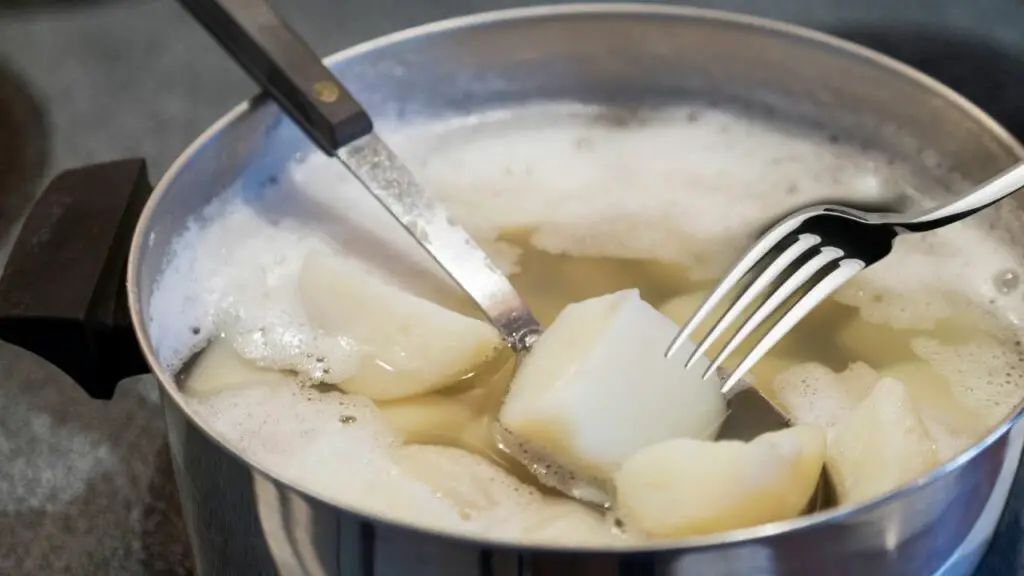
There are a few ways to check if boiled potatoes are done.
Here are three methods you can use:
- Pierce with a fork: Use a fork to pierce the potato in the thickest part. If the fork goes through the potato easily with little resistance, then the potato is done.
- Check the texture: Take a potato out of the pot and press it lightly with a fork or your fingers. If the potato is cooked, it will be soft and easy to mash. If it’s still firm and resists the pressure, it needs to cook for longer.
- Taste test: Cut a small piece of potato and taste it. If it’s tender and cooked through, it’s done. If it’s still crunchy and undercooked, it needs more time.
It’s important not to boil your potatoes too long, as this is a sure way to make them fall apart. As soon as the potatoes are done, remove them from the heat and drain the water immediately.
Read Also: 10 Ways To Bake Potatoes Faster (Start With Nailing It!)
In Conclusion
As you can see, boiling potatoes without them falling apart is not as difficult as it may seem. Once you have waxy potatoes that are not too old, and you don’t overboil them, they will stay whole and intact, perfect as a side for any dish or making a potato salad.
However, If they do fall apart, make creamy mash instead!
